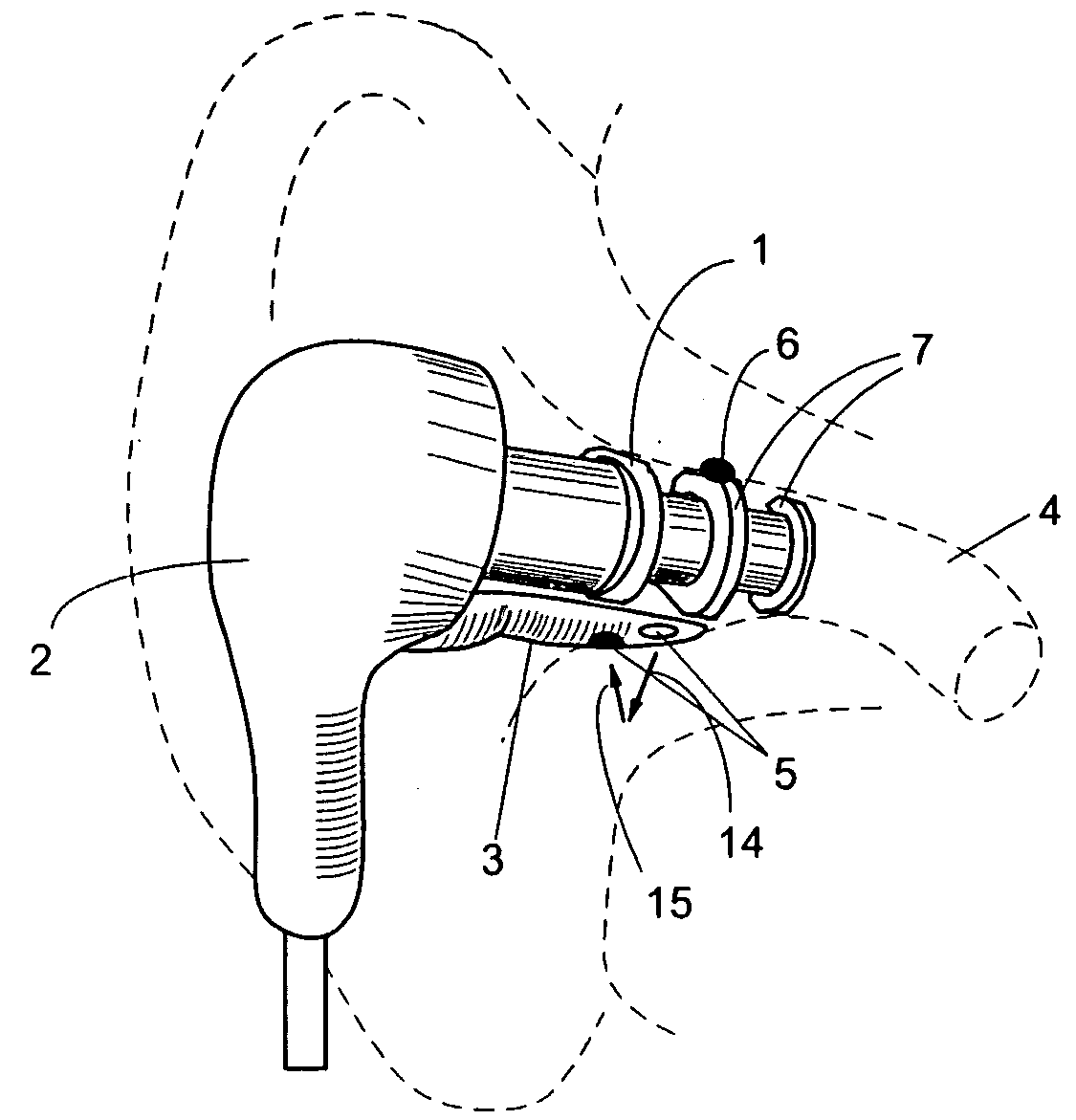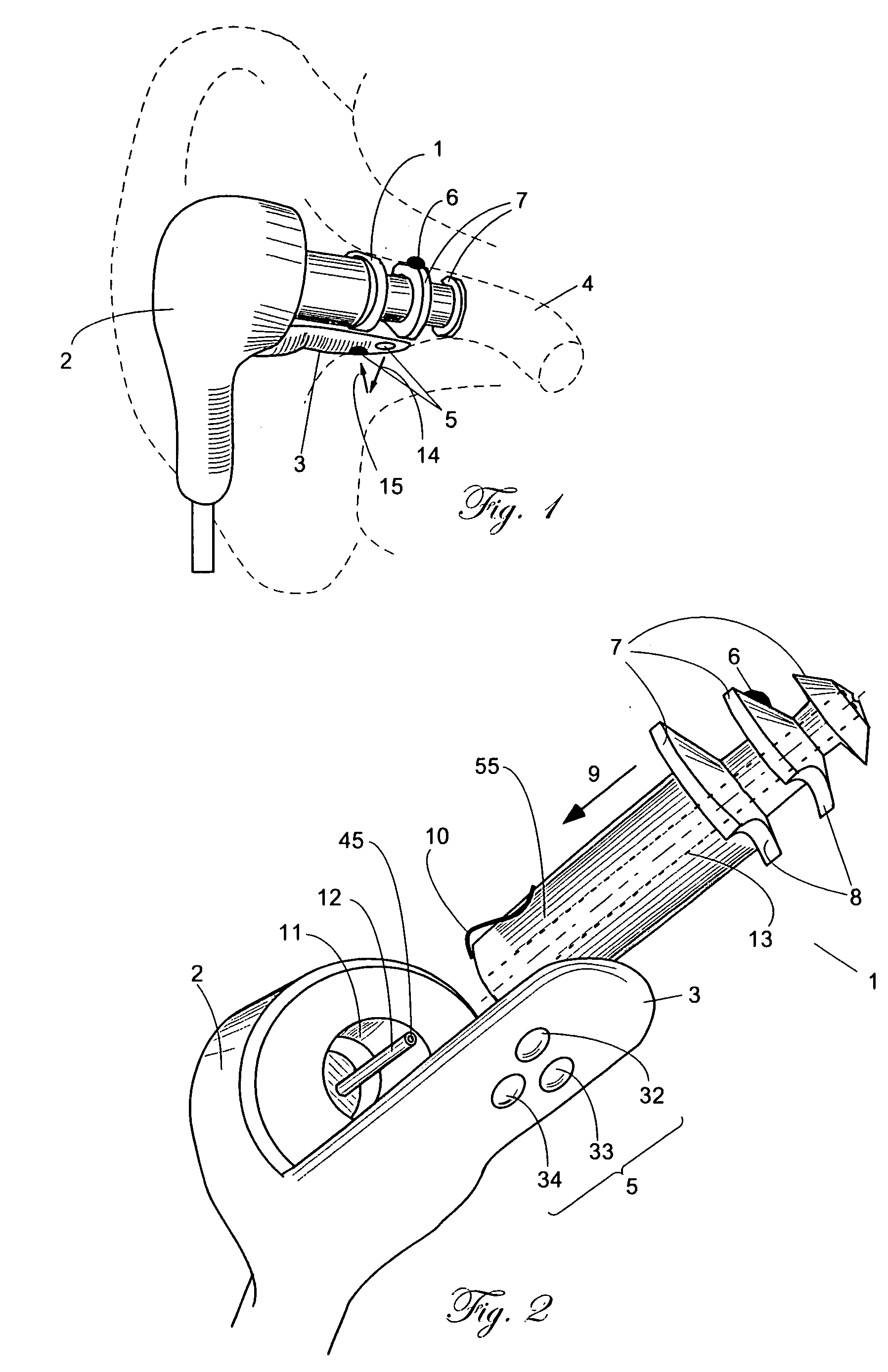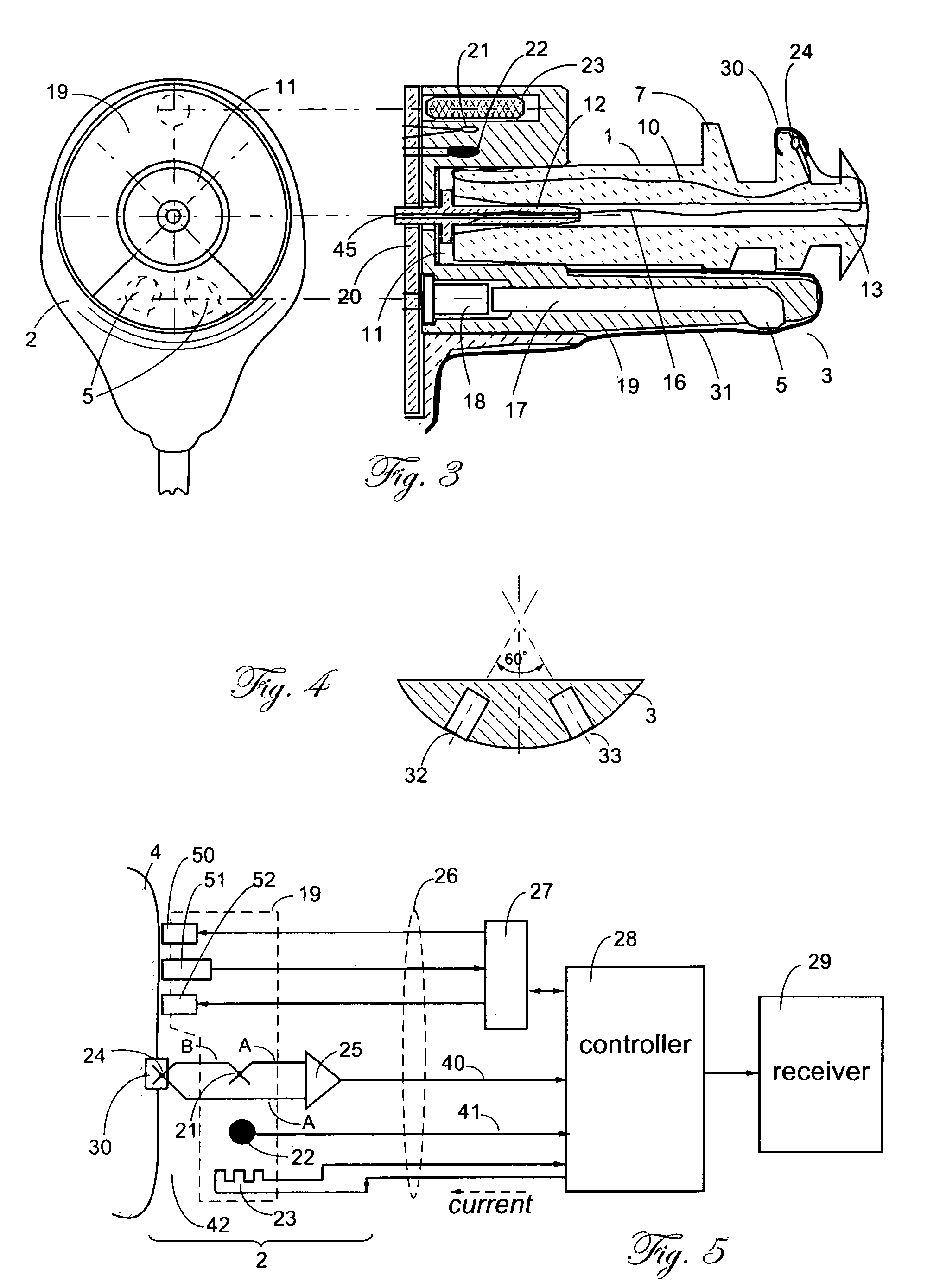Vital signs probe
a technology of vital signs and probes, applied in the field of vital signs probes, can solve the problems of inefficiency of packaging various sensors in a single housing, inconvenient use, and inconvenient use, so as to enhance tissue perfusion, improve performance, and improve the effect of perfusion
- Summary
- Abstract
- Description
- Claims
- Application Information
AI Technical Summary
Benefits of technology
Problems solved by technology
Method used
Image
Examples
first embodiment
[0041] First Embodiment
[0042]FIG. 1 shows plug 1 attached to ear probe 2. Probe 2 has a sensing extension 3 that carries blood oximetry windows 5. Plug 1 is fabricated of plaint, flexible and resilient material, such as silicone. A compressible foam also may be used.
[0043] Before the vital signs monitoring starts, plug 1 and extension 3 are inserted together into ear canal 4. This combination of extension 3 and a resilient ear plug 1 allows for a secure and stable positioning of the optical windows 5 against ear canal 4 walls. Extension 3 may be either rigid or somewhat flexible to accommodate variations of the ear canal shapes, while ear plug 1 is acting like a spring conforming its own contour to the ear canal shape and applying pressure on extension 3, pushing it against the ear canal wall. It should be appreciated that plug 1 has somewhat different shapes before, during and after insertion into the ear canal. Its original shape (before insertion) may have many configurations. H...
second embodiment
[0053] Second Embodiment
[0054] In this embodiment, photons of light that are modulated by the pulsatile blood to produce the photo-plethysmographic signals pass through a translucent ear plug. Thus, the essential component of this embodiment is a light transparent ear plug that also may be used as a carrier of a temperature sensor. Contrary to the first embodiment, when the optical components were incorporated into extension 3, the ability of an ear plug to transmit light allows to keep most of the optical components outside of the ear canal and thus simplifies design and use of the device.
[0055] Since the pulse oximetry data and indirect blood pressure monitoring can be accomplished from signals that are measured by the same optical probe, the same components that are used for the ear pulse oximetry are fully applicable for the indirect arterial blood pressure monitoring as well.
[0056] The light emitting devices (for example, light emitting diodes—LED) are positioned inside probe...
third embodiment
[0066] Third Embodiment
[0067] The above described sensing assemblies can be modified for use on an outside surface of a patient body, preferably above a bone, such as a scull or rib. FIG. 14 depicts a front plate that is to be placed on the patient skin. Like in the ear probe, it contains all essential components, such as heat equalizer 259 (analogous to equalizer 19), button 30, windows 250, 151 and 252, heater 69, cable 226. Thermal insulator 260 serves the same thermal function as probe 64 of FIG. 9. Insulator 260 may be made of polymer foam or it may be just a void inside the body of probe 275. The interior of the skin sensor is shown in FIG. 15 where first thermocouple junction 24 is positioned inside button 30 that makes intimate thermal contact with patient's skin 270. The button may be permanently attached to insulator 260, or alternatively, as shown in FIG. 15, it may be positioned on a disposable protective cup 265. That cup may be made of such material as polypropylene an...
PUM
 Login to View More
Login to View More Abstract
Description
Claims
Application Information
 Login to View More
Login to View More - R&D
- Intellectual Property
- Life Sciences
- Materials
- Tech Scout
- Unparalleled Data Quality
- Higher Quality Content
- 60% Fewer Hallucinations
Browse by: Latest US Patents, China's latest patents, Technical Efficacy Thesaurus, Application Domain, Technology Topic, Popular Technical Reports.
© 2025 PatSnap. All rights reserved.Legal|Privacy policy|Modern Slavery Act Transparency Statement|Sitemap|About US| Contact US: help@patsnap.com



